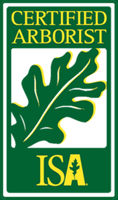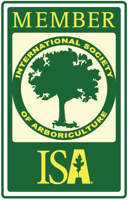Originating in the Caribbean a century ago, lethal yellowing brought great attention to itself in the 1950s during a drastic outbreak in Jamaica and the Florida Keys. Today, the lethal yellowing disease still affects Florida palm trees and has spread to Texas, as well. There is no cure for this disease, yet frequent oxytetracycline injections help to control it. Below, Zimmerman Tree Service, experts in tree servicing, pruning, total plant health care, and more, explains lethal yellowing, including what to do if your palm tree has it.
Good News: Palms Native to Florida Are Generally Resistant to Lethal Yellowing
What Are the Symptoms of Lethal Yellowing?
Lethal yellowing gets its name from the yellowing and drooping of palm fronds, beginning with the lower fronds and advancing up through the crown. Unless treated, the tree dies within three to six months of the first symptom.
The Progression of Lethal Yellowing
- Coconuts, both mature and immature, begin to drop from coconut palms, and the fruit begins to drop from other varieties. This is a process called shelling.
- Flower stalks (inflorescences) begin to darken.
- Palm fronds start to yellow or turn grayish-brown (depending on the species), starting with the older, lower fronds and progressing up to the crown of the tree.
- The spear leaf collapses, and the bud dies, signaling that the tree is dead.
- Eventually, the entire crown will fall from the tree, leaving behind a telephone pole-like stalk.
Why Is My Palm Tree Turning Yellow?
Your palm tree may be turning yellow for a variety of reasons. These can include insufficient watering, nutrient deficiencies, and diseases such as lethal yellowing. Identifying the specific cause can help to derive effective solutions.
Lethal yellowing in Florida palm trees has been believed to stem from a bacteria-like organism called phytoplasma. Phytoplasmas are still not fully understood, however they can be targeted and controlled with antibiotics such as oxytetracycline. This aids in the protection of various palm trees.
The Spreading of Lethal Yellowing
While there is no definitive proof as of yet, the lethal yellowing microorganism is most likely spread by an insect, the planthopper (Myndus crudus Van Duzee). Again, research is continuing into the way in which this insect spreads the disease. Tests have demonstrated that insecticides can slow the spread of planthoppers and, with them, lethal yellowing. Nevertheless, widespread chemical spraying can lead to ecological harm and may not be economically viable. Alternatively, an approach to develop ground cover that discourages the insects can offer a potential solution.
What to Do if Your Tree is Suffering from Lethal Yellowing
There is no real cure for lethal yellowing. Quarterly injections of oxytetracycline can aid in controlling the disease, and this may be an option for extremely valuable residential landscape palms. The best option in combating lethal yellowing is to plant palms that are resistant to the disease. Consult with your local tree care provider, Zimmerman Tree Service in Palm Beach County, for guidance on addressing the lethal yellowing in your area.
Popular Native Palms Resistant to Lethal Yellowing
- Cabbage Palmetto (Sabal palmetto)
- Royal Palm (Roystonea regia)
- Paurotis Palm (Acoelorraphe wrightii)
- Florida Thatch Palm (Thrinax radiata)
- Key Thatch Palm (Thrinax morrisii)
Common Imported Palms Resistant to Lethal Yellowing
- Alexandra Palm (Archontophoenix alexandrae)
- Carpentaria Palm (Carpentaria acuminata)
- Date Palm (Phoenix dactylifera)
- Yellow Cane Palm (Chrysalidocarpus lutescens)
- Pygmy Date Palm (Phoenix roebelenii)
- Macarthur Palm (Ptychosperma macarthurii)
- Sago Palm Tree (Cycas revoluta)
- Solitaire Palm (Ptychosperma elegans)
- Mexican Fan Palm (Washingtonia robusta)
- Foxtail Palm (Wodyetia bifurcata)
- Queen Palm (Syagrus romanzoffiana)
For further assistance with lethal yellowing or palm leaves turning yellow, contact us today! Our experts at Zimmerman Tree Service specialize in tree disease management, including sago palm trees, date palm trees and other types of palm trees in Florida, ensuring your landscape is healthy and green.





